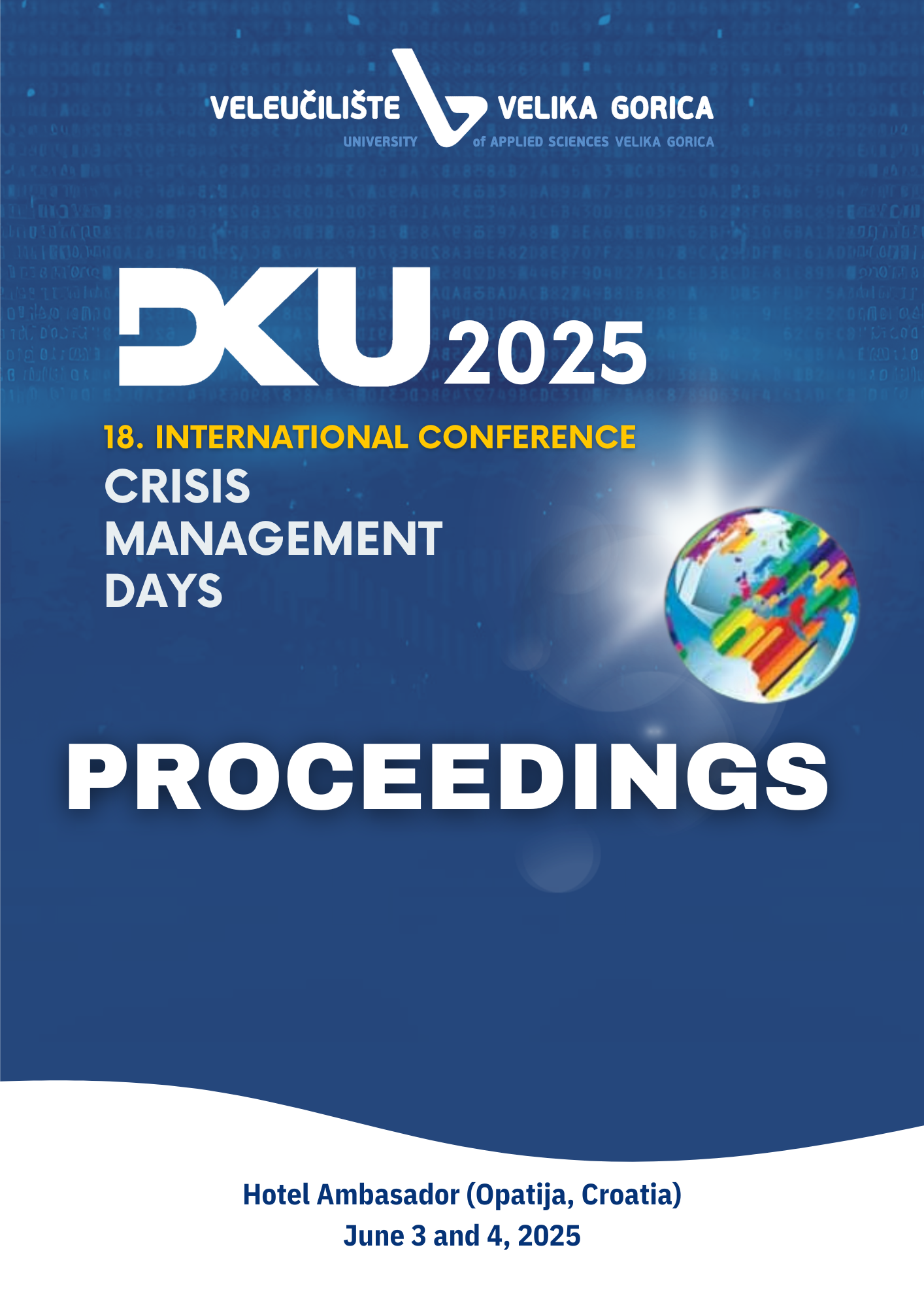Published 2025-11-16
Keywords
- Mass Decontamination,
- Body pose estimation,
- CBRNE incident,
- Emergency Response,
- Crisis Management
How to Cite
Copyright (c) 2025 Manousos Logiakis, Prodromos Boutis, Iliana Vasilopoulou, Katerina Valouma, Anastasios Dimou, Spyridon Kintzios, Eleftherios Ouzounoglou, Stefanos Vrochidis

This work is licensed under a Creative Commons Attribution-ShareAlike 4.0 International License.
Abstract
Effective decontamination is critical in emergency response, yet traditional systems require extensive infrastructure, specialized personnel and significant logistical support, limiting their practicality in urgent scenarios. This Work-in-Progress (WiP) paper presents: i) the Fast Deployable Mass Decontamination system (FDMD), a novel decontamination tunnel designed for rapid deployment, operational flexibility and ease of use in various emergency response environments, and ii) the DECON Body Pose Estimation Tool (DBPET), a camera-based AI-driven image-analysis system that tracks body posture in real-time, integrated with the FDMD to ensure optimal decontamination coverage. Utilizing integrated speakers, the DBPET provides automated, step-by-step instructions to guide individuals and minimize body posture error based on international standards. Additionally, its multilingual support enhances accessibility, enabling clear communication in high-stress environments. FDMD incorporates three interchangeable sets of sprinklers, supporting both wet and dry decontamination methods based on the nature of the contamination. The system features a lightweight, modular structure that enables quick assembly with minimal training requirements, while minimizing its storage in a large suitcase. This paper examines the decontamination process and systems and outlines the FDMD’s and DBPET’s design, key technological components, initial experimental validation efforts and expected impact and benefits. Preliminary assessments focus on deployment speed, body posture efficiency and operational scalability. Future work will expand on performance testing, field trials and integration with other technological tools under development (e.g. Digital Triage Tag) and within emergency response frameworks. By addressing current decontamination challenges, FDMD integrated with the DBPET aim to provide an efficient, cost-effective, rapidly deployable and adaptable solution for first responders (FRs), experts and non-experts managing CBRNE incidents.
References
- Athanasiadis, S., Michalis, P., Ouzounoglou, E., Karagiannidis, L., & Amditis, A. (2022). Interoperability in crisis management: specifications for digital scenarios to enhance acquisition of triage information during search and rescue operations.
- Calder, A., & Bland, S. (2015). Chemical, biological, radiological and nuclear considerations in a major incident. Surgery (Oxf). doi:doi: 10.1016/j.mpsur.2015.07.006.
- Carter, H., & Amlôt, R. (2016). Mass Casualty Decontamination Guidance and Psychosocial Aspects of CBRN Incident Management: A Review and Synthesis. PLoS Currents 8. doi:10.1371/currents.dis.c2d3d652d9d07a2a620ed5429e017ef5
- Carter, H., Drury, J., Rubin, G. J., Williams, R., & Amlôt, R. (2012). Public Experiences of Mass Casualty Decontamination. Biosecurity and Bioterrorism: Biodefense Strategy, Practice, and Science. doi:https://doi.org/10.1089/bsp.2012.0013
- Chilcott, R. P., Larner, J., & Matar, H. (. (2018). Primary response incident scene management (PRISM): Guidance for the operational response to chemical incidents, 2nd edition; volume (Vol. 1: strategic guidance for mass casualty disrobe and decontamination).
- Coppola, D. (2020). Introduction to International Disaster Management, Fourth Edition. Butterworth- Heinemann.
- Hai-Long, L., Wen-Jun, T., Ya-Kun, M., Ji-Min, J., Rong-Li, D., & Er-Chen, Q. (2015). Emergency response to nuclear, biological and chemical incidents: challenges and countermeasures. Mil Med Res.
- Homeland Security. (2007). Guide for the Selection of Biological, Chemical, Radiological, and Nuclear Decontamination Equipment for Emergency First Responders.
- Homeland Security. (2014). Patient Decontamination in a Mass Chemical Exposure Incident: National Planning Guidance for Communities.
- International Atomic Energy Agency. (2023). Decontamination methodologies and approaches.
- Lake, W., Schulze, P., Gougelet, R., & Divarco, S. (2013). Updated Guidelines for Mass Casualty Decontamination During a HAZMAT/Weapon of Mass Destruction Incident, Volumes I and II.
- Madigan, M. (2023). Disaster Response Practices. Springer Cham. doi:https://doi.org/10.1007/978-3- 031-42147-1
- National Institute of Justice. (2001). Guide for the Selection of Chemical and Biological Decontamination Equipment for Emergency First Responders. U.S. Department of Justice. Retrieved from https://www.ojp.gov/pdffiles1/nij/189724.pdf
- Sendai Framework for Disaster Risk Reduction: 2015-2030. (2015). Retrieved from https://www.undrr.org/media/16176/download?startDownload=20250521
- Turmus, E. K., & Hostiuc, F. (2023). Enhancing Capabilities for Crisis Management and Disaster Response. Springer Netherlands.
- U.S. Department of Education. (2007). Practical Information on Crisis Planning: A Guide for Schools and Communities.


